Dietary mineral supplementation improves production and profitability
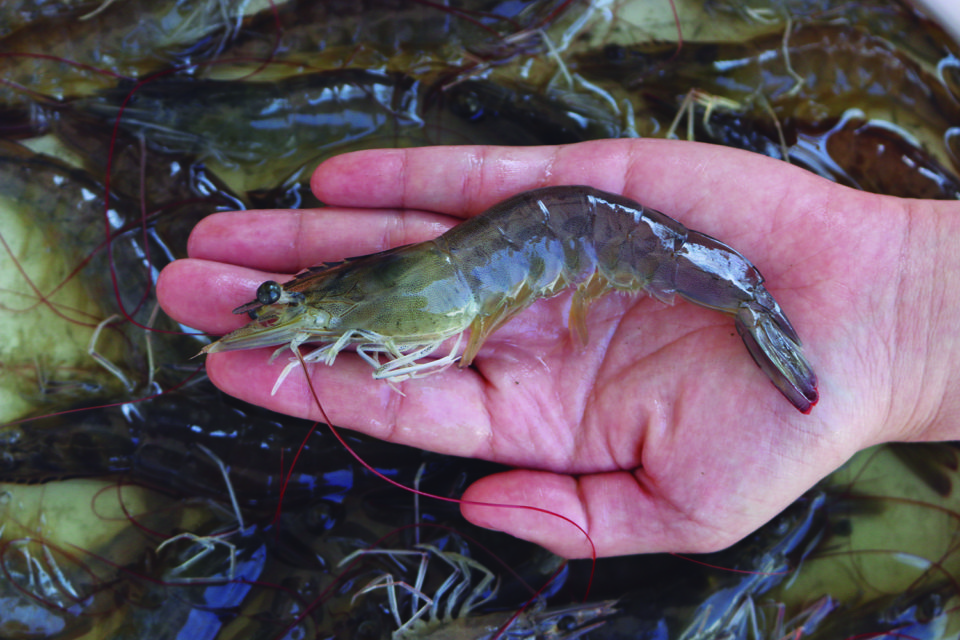
The culture of the Pacific white shrimp (Litopenaeus vannamei) represents one of the segments with the highest growth and profitability in the global aquaculture industry. In Ecuador, shrimp exports from January to December 2018 reached nearly $3.2 billion, with more than 1.1 billion pounds exported. This represents a growth of 16.7 percent in productivity compared to the previous year (Ecuador’s shrimp exports during the first six months of 2019 were more than 300,000 metric tons, or MT, up 26 percent compared to the same period in 2018).
Several characteristics – including high growth rates, survival and tolerance to a wide range of salinities – explain why L. vannamei represents 77 percent of total, global farmed shrimp production.
In Ecuador, heavy rains occur each winter, considerably lowering the salinity in the estuaries, thus affecting the normal production in shrimp farms that use these waters in their production ponds. This causes osmotic stress to the cultured shrimp, which is why a search for alternatives is necessary by compensating for low salinity through proper nutrition.
The culture at low salinity leads to a series of challenges, such as the management of the environment due to the deficiencies of certain minerals, and the management of recirculation systems and higher densities than has been traditional. All this has led to the development of shrimp feeds designed to meet the animal’s needs for these conditions.
The deficiencies of the main ions (especially potassium K+and magnesium Mg+2) are corrected in the water with the addition of the salts of these minerals, to reach the necessary concentrations to be equivalent to those of the diluted seawater at the same salinity. Using the equation by Boyd and Thunjai (2003), we can estimate: SECx = (Sp) (Rx) where SECx is the equivalent concentration in seawater of the ion x; Sp is the salinity of the water in the pond; and Rx is the ratio between the concentration of ion x in seawater and the salinity of normal seawater. The values for Rx are presented in Table 1.
Molina, osmoregulation, Table 1
| Element/compound | Ion | Factor |
|---|
Element/compound | Ion | Factor |
|---|---|---|
| Calcium | Ca2+ | 11.6 |
| Magnesium | Ca2+ | 39.1 |
| Potassium | K+ | 10.7 |
| Sodium | Na+ | 304.5 |
| Bicarbonate | CO3H | – |
| Chloride | Cl- | 551.0 |
| Sulfate | SO42- | 78.3 |
For good growing conditions for cultured shrimp, the ionic profile of low salinity water should have adequate levels and proportions of specific ions (Na+:K+, Mg2+:Ca2+, etc.), which should be similar to those of seawater. For example, it would be 28:1 for the Na+: K+ratio. To counteract the low proportions of Na+: K+and Mg2+: Ca2+, in the water, the supplementation of the ions can be complemented with the addition to the diet of these minerals, which allows the shrimp to absorb these ions in their digestive tracts, and contributing to the adjustment by adding salts to the water.
This article – adapted and summarized from Aquaculture (Ecuador) Issue 128, April 2019 – reports on a study that assessed the effect of diets with added K+and Mg2+as a complement to the deficiencies in these ions in low salinity environments, and the effect of diets formulated for environments with low salinity compared to diets without added ions.
Osmoregulation in crustacean decapods: isosmotic point and optimum salinity
Fluctuations in the culture environment trigger adaptive responses that tend to maintain equilibrium (homeostasis) in organisms, which has an effect on physiological functions and ultimately affects growth and survival. Due to their great capacity to maintain their osmotic and ionic regulation in several saline media, L. vannamei can inhabit waters with salinities ranging from 0.5 to 60 ppt.
Osmoregulation in crustaceans is an important physiological function in their adaptation to environmental changes. The osmoregulatory capacity is determined by the difference between the osmolarity of the haemolymph serum and the osmolarity of the medium. The osmoregulatory capacity of L. vannameidecreases naturally as the animal reaches the subadult or adult stages, with the smallest shrimp being the best osmoregulators. In aquatic species, osmoregulation depends on the active transport of ions by the electrogenic pump of the cell membrane, based on the activity of adenosine triphosphate (ATP; complex organic chemical that delivers energy to drive many processes in living cells). L. vannameiexhibits an isosmotic point (where the solute concentration is in equal equilibrium outside and inside a cell) of about 718 mOsm/kg.
Therefore, L. vannamei can achieve optimal survival and growth in water with salinity from 20 to 25 or 26 ppt, with a hyperosmotic regulation pattern at low salinities and a hyposmotic regulation pattern at high salinities. Among penaeid species, L. vannamei is one of the species that has the best capacity for osmoregulation.
In crustaceans, most of the ammonium excreted is a product of the catabolism of amino acids from the diet. Valdez et al. (2008) observed that the highest concentrations of ammonium were produced by shrimp at 32 ppt salinity; the animals maintained under isosmotic conditions (26 ppt) excreted the lowest concentrations; and intermediate values were recorded in the juveniles who were in hyposmotic conditions (20 ppt). Jiang et al. (2000) and Díaz et al. (2001) also reported a lower energy expenditure due to nitrogenous excretion at 26 ppt. Rosas et al. (2002) found a higher excretion of ammonium in juveniles of L. vannamei maintained at a salinity of 15 ppt, with respect to others cultivated in 40 ppt.
The increase in the excretion of nitrogen compounds in juvenile L. vannamei acclimated to low salinities is due to an increase in the catabolism of the amino acids involved in the regulation of the osmotic pressure of the hemolymph. By increasing the excretion of ammonium, sodium uptake occurs through the Na+/NH4+exchange pump to maintain the osmotic concentration of the hemolymph. In hyperosmotic media, this physiological mechanism is considered responsible for maintaining osmotic pressure in penaeid shrimp.
From the production perspective, these adaptations have a cost that translates into lower weight gain and survival. Several authors have associated the isosmotic point with optimal conditions for the growth of penaeid shrimp. However, better growth not always coincides with the reported isosmotic point. L. vannamei grows best in salinities below the isosmotic point. In ponds with low salinity, once the shrimp have been adapted, the general principle is to maintain an equivalent proportion of the main ions similar to seawater.
Importance of potassium and magnesium for survival
Potassium (K+) is the main intracellular cation necessary for the proper functioning of the regulation of ions, acid-base balance and basic metabolism. K+is important for the activation of Na+/K+ATPase [sodium-potassium adenosine triphosphatase, also known as the Na⁺/K⁺pump or sodium-potassium pump, is an enzyme in the plasma membrane of all animal cells that has several functions in cell physiology], a crucial component in the regulation of intracellular volume. Enzyme activity may be directly related to the concentration of K+, which when insufficient affects the ability to osmoregulate effectively. An imbalance between concentrations of K+and Na+in hemolymph can cause mortality in shrimp.
The lack of an adequate concentration of K+in the water profile has a negative impact on shrimp survival. In tests with PL18-28 that were acclimated from 36 ppt to salinities of 4 ppt for 48 hours and maintained an additional 24 hours in solutions added with different salts, the solutions with K+showed an average increase in survival of 20 percent and 42 percent above the solutions without potassium at 24 and 48 hours, respectively. This shows that there is a requirement of potassium in fresh water for the survival of shrimp.
Other studies have reported that in conditions of low salinity, diets containing chelated K+supported growth rates relatively higher than the basal diets when tested with 0.5-gram animals. This shows the benefits of supplementation and that such supplementation is necessary in low salinity waters. This was also reported for black tiger shrimp (Penaeus monodon) by Shiau and Hsu (1999), who described the existence of a requirement that cannot be supplemented only by the potassium available in brackish water, containing 360 ppm of K+.
Potassium and magnesium are essential cations for the growth, survival and osmoregulation of crustaceans. Mg2+is the second most abundant cation within the cell, required by crustaceans because it acts as a cofactor in many enzymatic reactions important for the normal functioning of the organism. It is involved in osmoregulation, protein synthesis and growth. Mg2+is also essential in the metabolism of skeletal tissue and neuromuscular transmission. The Na+/K+ATPase enzyme is important in osmotic and ionic regulation in acclimation to low salinity media. In crustaceans and in the absence of Mg2+, this enzyme does not hydrolyze ATP.
At low salinity, the Mg2+ level has also been correlated with shrimp survival for osmoregulation. Cheng et al. (2005) evaluated the growth response of L. vannamei raised in 3 ppt salinity water salinity and established an optimal requirement of 2.60 to 3.46 grams Mg2+/kg. A lack of adequate Mg2+or K+can affect the activity of the Na+/K+ATPase enzyme in crustaceans.
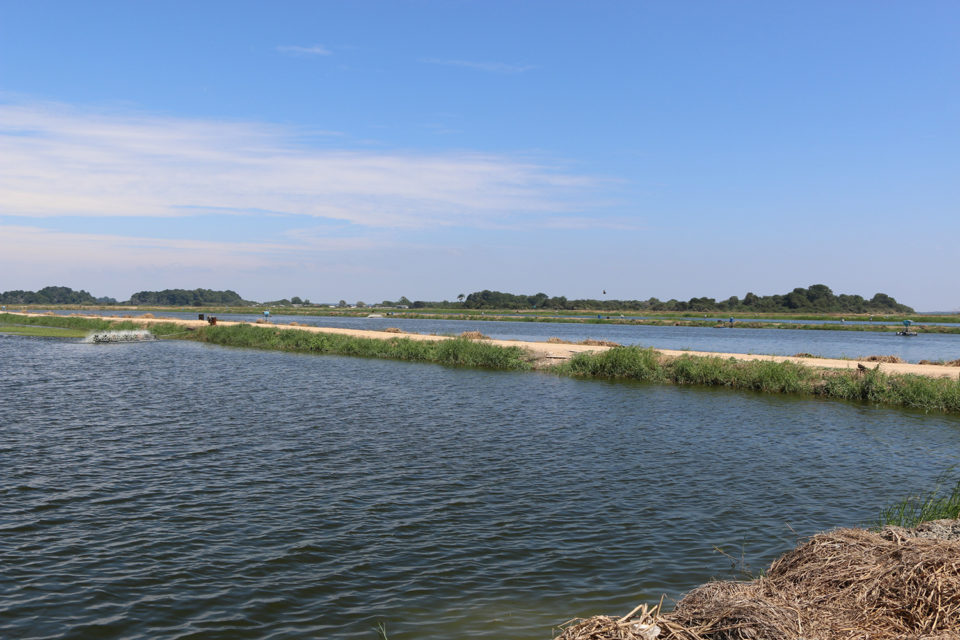
Field evaluation
With the objective of demonstrating that the use of feed formulated for low salinity conditions provides improvements in growth, survival and FCR, an evaluation was carried out at a shrimp farm under a 5 ppt salinity recirculation system located in Taura, Province of Guayas (Ecuador). Ponds used ranges in area from 6 to 12 hectares (ha). The test production cycles were between 97 and 110 days, depending on the shrimp harvest weight.
Initial weight of test shrimp was 0.4 to 0.6 grams and stocking densities were 13 to 15 PLs per square meter. Three feeds were tested after animals reached 4 grams, with a protein content of 35 percent, with and without additional mineral salts: standard formulated feed (B35S E01), feed No. 1 formulated for low salinity (B35P BS01) and feed No. 2 formulated for low salinity (B35 BS02).
Feeds were applied in the ponds twice daily and adjusted based on feed tray monitoring before each feed application. Micro-pellet feeds were used from the transfer to the test ponds until animals reached 4 to 5 grams, followed by the feeds formulated for low salinity (1.8 x 3 mm pellets of BS01 and BS02 from 4 to 5 to 9 grams), and then switching to larger 2.2 x 5 mm pellets from 9 grams until harvest. Feed B35S E01, used as the control, was formulated without the addition of any extra mineral salts.
Shrimp were sampled weekly to estimate average weights and to concurrently perform pathology assessments in the field to check for any diseases. In order to minimize the sources of variation, nauplii of the same maturation were used. Water quality parameters were regularly assessed: in the morning, dissolved oxygen and temperature were above 3.00 ppm and around 24.0 degrees-C respectively, with water temperature values occasionally lower than 24 degrees-C, normal for the season.
The proximal composition of the diets used showed values within what was expected for this type of feeds. Moisture (9.2 to 9.9 percent) and lipid contents (7.4 to 8.3 percent) were similar, and the protein and starch levels were within a range of 36 to 37 percent and 18.3 to 19.3 percent, respectively. The ash content in food B35P BS01 was lower (9.4 percent) than the others (11.4-11.8 percent).
Table 2 shows the results of the evaluation of the feeds. Analysis of variance showed that the ponds receiving the BS02 low salinity feed statistically had, on average, the highest survival rates, highest final weights and production. Although a higher growth rate or better feed conversion were not observed, this feed produced better values than the other two feeds tested.
Molina, osmoregulation, Table 2
| Feed | Production (lbs./ha) | Final weight (g) | Days of culture | Weekly growth (g) | FCR |
|---|
Feed | Production (lbs./ha) | Final weight (g) | Days of culture | Weekly growth (g) | FCR |
|---|---|---|---|---|---|
| B352 E01 | 5005a | 20.5a | 98 | 1.45a | 1.54a |
| B35S BS01* | 5396a | 24.1b | 108 | 1.53a | 1.56a |
| B35S BS02* | 6315b | 25.6b | 110 | 1.61a | 1.49a |
The base/control feed (B35S E01) produced the least responses in all the parameters mentioned, while feed B35S BS01 resulted in a better response vs. the control, without exceeding the performance of feed BS02.
When analyzing the content of Mg2+and K+in the feeds tested, a relationship between these two minerals was found of 0.26, 0.49 and 0.93 for feeds B35S E01, B35S BS01 and B35P BS02, respectively. These relationships have an increasing order, the same pattern as with the shrimp survival, production, final weights and growth rates obtained, indicating that the relationship between these elements has a great impact on the performance of shrimp, more than the concentration of each mineral separately.
Perspectives
Results show that it is possible to considerably improve the shrimp production, and therefore to obtain a better economic margin when correcting these mineral deficiencies/fluctuations in the pond water profile – especially for Mg2+and K+ – through the supplementation of these minerals in the diet. These additions have shown promising results at both the field and laboratory levels, complemented with the salts used to correct the ionic charge in culture systems with low salinity.
References available from corresponding author.
Now that you've reached the end of the article ...
… please consider supporting GSA’s mission to advance responsible seafood practices through education, advocacy and third-party assurances. The Advocate aims to document the evolution of responsible seafood practices and share the expansive knowledge of our vast network of contributors.
By becoming a Global Seafood Alliance member, you’re ensuring that all of the pre-competitive work we do through member benefits, resources and events can continue. Individual membership costs just $50 a year.
Not a GSA member? Join us.
Authors
-
-
Manuel Espinoza, M.Sc.
Research & Development - Skretting Ecuador
Ecuador -
Ing. Ac. Néstor Chuya
Technical Services - Skretting Ecuador
Ecuador
Tagged With
Related Posts
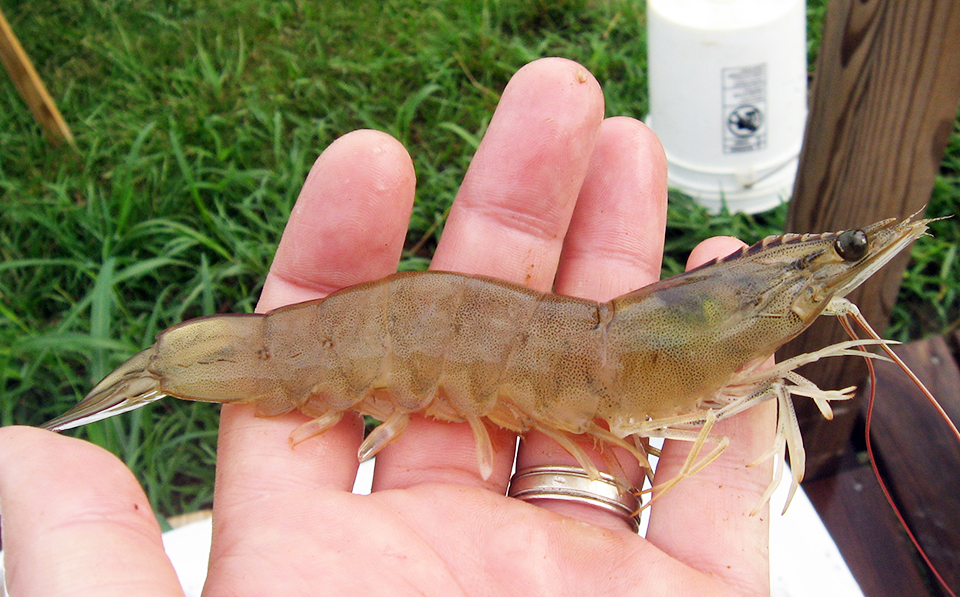
Aquafeeds
Alternatives to fishmeal perform well in low-salinity shrimp farm trial
In a white shrimp farm trial in a low-salinity environment, alternatives to fishmeal did not negatively impact the growth, survival or FCR of the shrimp.
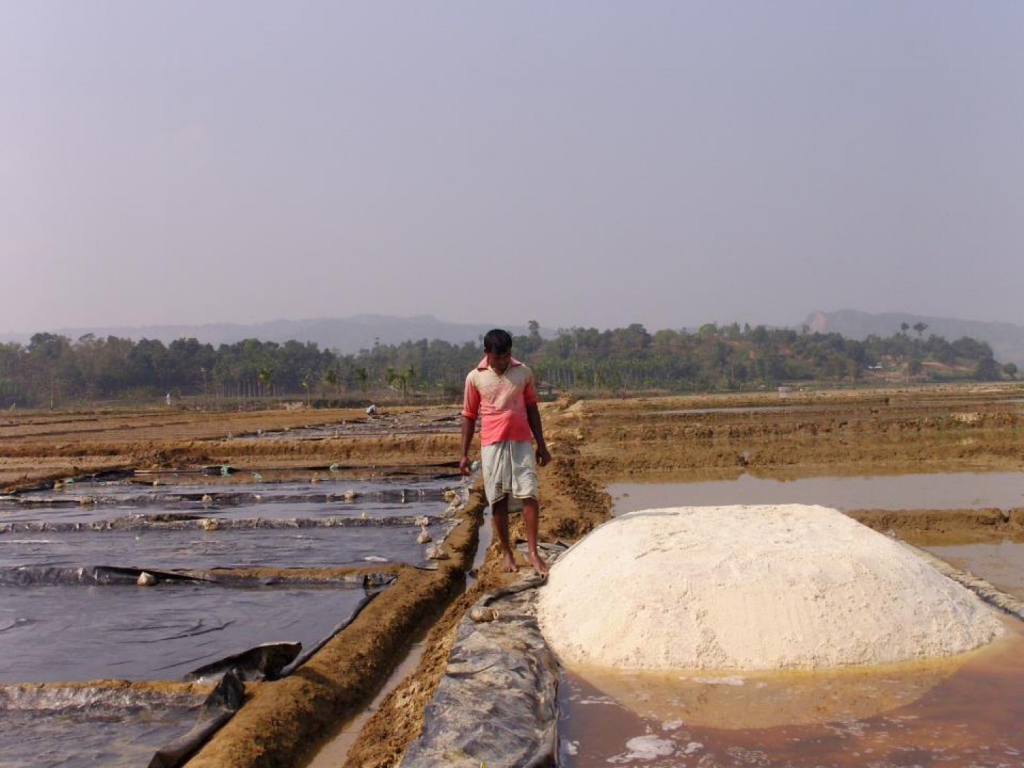
Innovation & Investment
Artemia, the ‘magic powder’ fueling a multi-billion-dollar industry
Artemia, microscopic brine shrimp used as feed in hatcheries, are the unsung heroes of aquaculture. Experts say artemia is still inspiring innovation more than 50 years after initial commercialization. These creatures are much more than Sea-Monkeys.
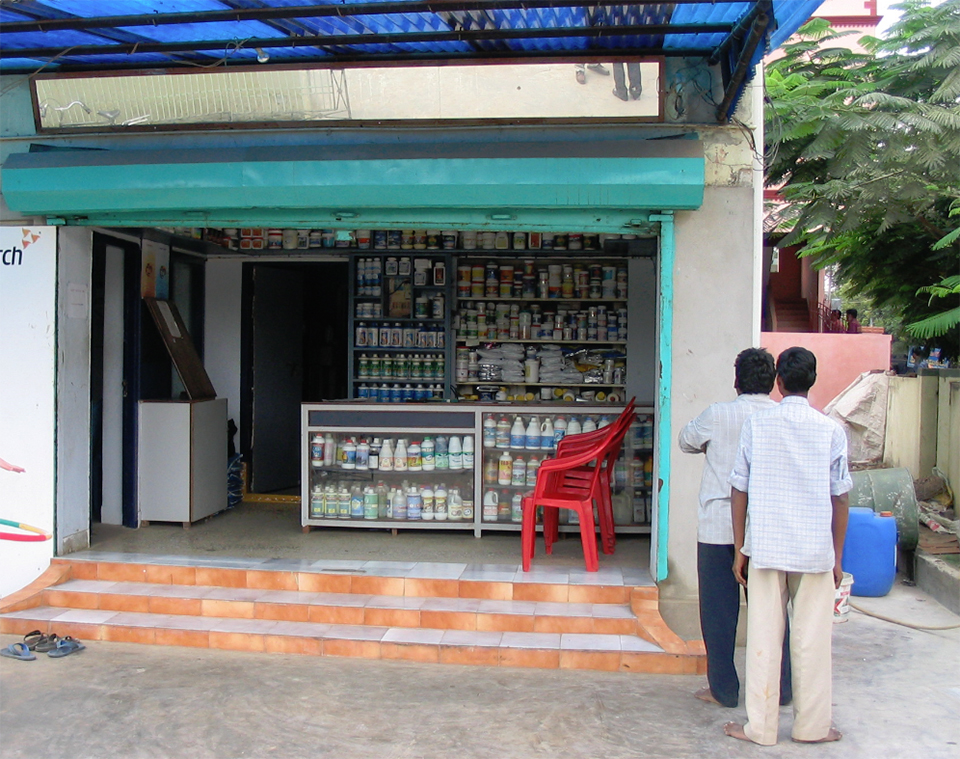
Responsibility
A review of water quality improvement products
Prof. Boyd examines products used by aquafarmers to improve water quality and conditions in their ponds and discusses their efficacy.
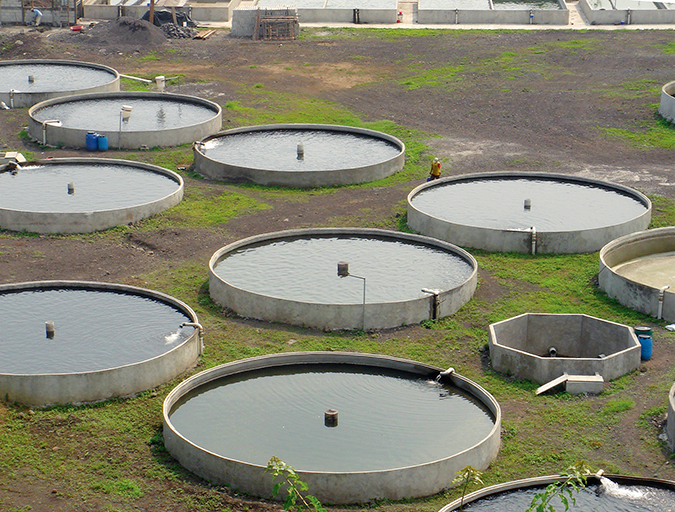
Responsibility
Calcium and magnesium use in aquaculture
Aquatic plants and animals get the essential nutrients calcium and magnesium from water and food. Calcium concentrations impact the hydration and development of eggs in a hatchery, where calcium carbonate precipitation can be troublesome.



